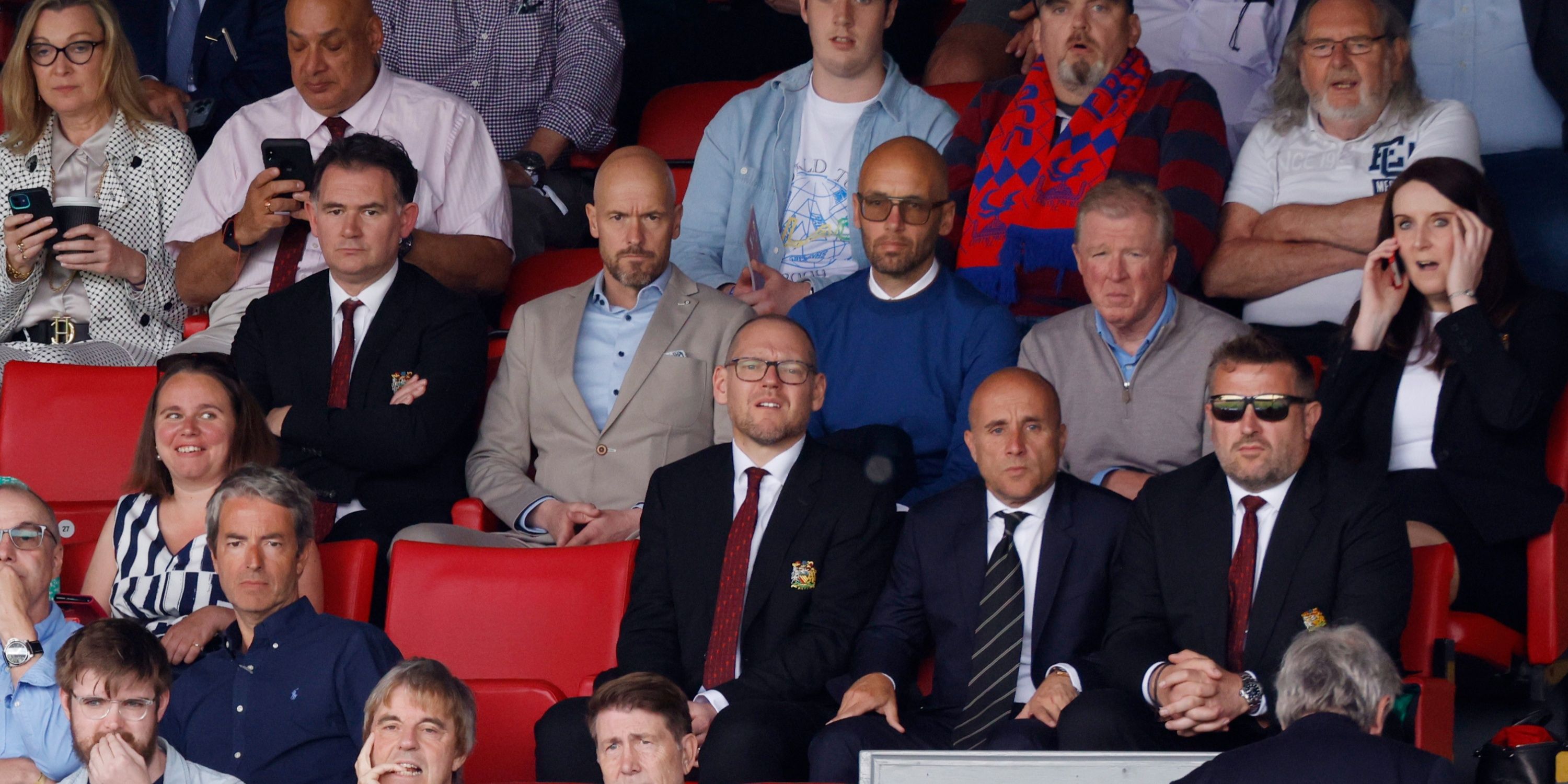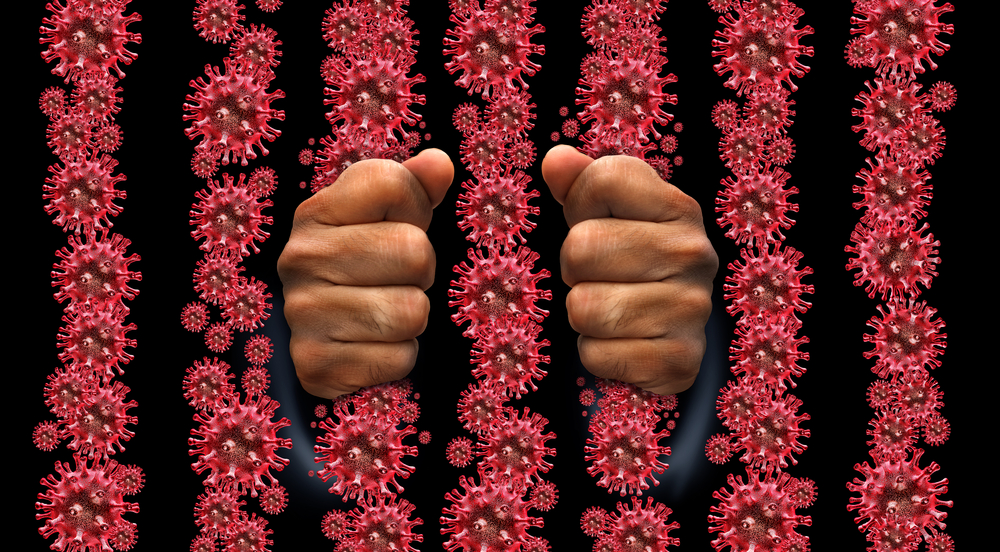den-belitsky/iStock via Getty Images
Looking back to my first SA article dealing with MannKind (NASDAQ:MNKD), seeing that it was published on October 2, 2014, I find it amazing that a decade has nearly passed. The ensuing road that MannKind has been on for those invested in their stock has been thrilling, with a lot of twists and turns, side trips to nowhere, steep hills to climb, and disappointment that each of them still doesn’t have a yacht sitting in their nearby safe harbor boat slip.
As I write this article about MannKind, they are fast approaching a beautiful hill with a setting sun being seen in glowing splendor. In the real world of medical science and research, there have always been new drugs that have been highly successful in treating human diseases. But also, there have been drugs created with much potential being seen early on, only to eventually realize the drug was not the answer for the intended disease. You might say they are over the hill before they know it!
As MannKind is reaching the crest of the depicted hill and sunset, is it time for company executives and board members to consider the nine-year record seeking profitability on the back of the Afrezza revenue stream and the results achieved? The question that needs to be resolved is whether this current road and hill picture journey is over the hill. Is the road straighter and with fewer hills, and will the needed Afrezza revenue be there to generate a profit?
With nine long years of marketing Afrezza, medical professionals have seen enough and moved on from prescribing Afrezza if the current data is reflective of the situation. Six straight months with stagnant prescriptions being filled, and now finding MannKind’s answer to future growth using clofazimine, a drug that Novartis (NVS) stopped marketing due to lack of generating revenue, the very thing that MannKind needs. To top it off, MannKind is not using its touted Technosphere technology system to create its inhaled version of this dated drug. Can MannKind be a better marketer of this drug than Novartis?
In this new article, I will detail the many issues MannKind faces, including the implications of its partnership with United Therapeutics (UTHR). Please note that I will use press releases and public statements to make my case. I’m not trying to destroy any viable company that can be a future contributor to our human healthcare needs. MannKind has a well-equipped manufacturing facility, so it could cut its losses with Afrezza and become the go-to manufacturing company in the United States. We need more of our drugs manufactured in the USA, due to safety issues we are seeing with foreign imports.
As for United, it has a host of products that can and have generated revenue, but all patented drugs have patent expirations, so the initial patent holder needs to prepare for this reality. We once had coal-powered engines that powered train engines, but we no longer have such vehicles transporting people or products.
————————————————————————————-
With my previous article about MannKind, I purposefully shared it before the anticipated quarterly reports from United Therapeutics and MannKind. As I suspected, what MannKind and United reported in their quarterly reports revealed more issues they are now dealing with. Issues that could have a significant impact on those invested in their respective stock. In the future, investors in MannKind should closely follow and digest what United accomplishes in each sequential quarter and the ensuing respective yearly results. Looking solely at MannKind and the revenue stream from Afrezza doesn’t provide the critical information needed to invest in either of these companies at the current levels. With both companies filing their 3rdQ results and issuing publicly shared comments, investors should be mindful of what they now admit as concerns related to their business model.
If one had read and listened to MannKind’s 3rd Q financial results on November 7th, there was an immediate euphoric response where we saw the stock in after-hours jump to more than $4.00 a share. Two days later (November 9th, 2023,) with a new day and after digesting what was shared by MannKind and the previous disclosures from United, the shares retreated to a new 52-week low of $3.38. Based on the previous 1:5 reverse split, this new low, the shares were trading for $0.676. This price shows that those purchasing their shares before this reverse split lost about 95% of their investment.
Let me repeat my long-term refrain that my issue with Afrezza is simply the science behind Afrezza, which precludes it from being a viable product that will be successful in the marketplace for human usage. As for MannKind’s partnership with United, it is currently the best thing going for MannKind and its solvency as a company. However, we are now seeing that this partnership might be a one-and-out proposition. Plus, one must never ignore that Afrezza is and will continue to drag on its ability to turn a profit, considering it has been available for nearly nine years. As for United, they appear to have some good lawyers, and their new disclosures are revealing. I will write more about this topic later in my article!
Numbers Don’t Lie!
United Therapeutics Quarterly Revenue for 2023:
- 1st Q – $506.900M
- 2nd Q- $596.500M +17% Growth
- 3rdQ – $609.400M + 2% Growth
MannKind Quarterly Revenue for 2023:
- 1st Q – $40.626M
- 2nd Q – $48,611M +19.6% Growth
- 3rd Q – $51.250M +5.4% Growth
MannKind Quarterly Net Results 4thQ, 2022, through 3rdQ,2023 NET for Commercial Products (Afrezza and V -Go)
- 4th Q,2022 -$17.440M
- 1st Q – $17.562M +.006%
- 2nd Q -$18.345M + 4.4%
- 3rd Q -$17.927M – (2.2%)
Gross Net Revenue for four quarters or a full year time frame-$71.274M
Monthly Average Over this Period –$17.818M
After nearly nine years of efforts to market Afrezza, and recently, V-Go, into the diabetes market, in the first three quarters of 2023, MannKind has produced an average quarterly net revenue of $17.818M. The latest 3rdQ results show a sequential decline in net revenue. Every viable and needed medical prescriber of medications for diabetics has had the opportunity to review the merits of Afrezza and V-Go. For those who have been prescribed Afrezza, they have seen the enormous numbers who refuse to refill their Afrezza prescription. In this period, they have never had 1,000 refills on a weekly basis. This indicates that historically, the dropout rate could be approaching 75% or more.
MannKind failed to mention in its latest quarterly report that its internal revenue stream has plateaued in the last four sequential quarterly reports. Now, investors can see that the sequential growth revenue has declined for the latest quarterly report. For every new prescription/patient due to diabetes, those new patients should need a refill in the next quarter, assuming they get 90-day supplies for their new prescription. This means that every 90 days, there is a rollover where the patient gets a new supply of Afrezza. This represents a quarter of automatic revenue growth for MannKind—if the patient wants to continue using Afrezza. Nearly nine years of weekly data showing the number of Afrezza prescriptions issued, they have never accomplished 1,000 or more in the refill category. Since May 12, 2023, the weekly NRx data has never been above the 300 level in weekly prescriptions. As we approach six straight months of NRx data reflecting levels below what Sanofi was able to achieve, Afrezza manufacturing and marketing expenses will be a barrier to MannKind’s ability to service the excessive debt they have on their books.
Each week, Symphony, one of the largest data-gathering companies for the drug industry, reports the number of prescriptions filled by the retail market. If you don’t have access to a data terminal reporting such information, there is an internet board that is exclusive for discussing and sharing information about MannKind, plus Afrezza and V-Go. There, one can see prescription data for the week and previous data going back to 2015
Tyvaso DPI
United’s PAH drugs are drugs that must be administered daily. Currently, United has a near monopoly on the use of Treprostinil as a medical treatment for PAH. Since the launch of Tyvaso DPI in June 2022, United has tried to migrate their nebulizer version of Tyvaso users to the newer version -Tyvaso DPI. In the case of accounting for their quarterly revenues, if a current user of Tyvaso switches to Tyvaso DPI, the revenue is either the same or higher or lower depending upon what United is the selling price for the respective drug to a patient. The point is that the patient remains a user of a United drug but is not considered a new patient for United. As for those already using the United drug, the number should remain close to the previous quarter’s number and the purchase cost of their United PAH drug.
At this point in the revenue growth for United, the next quarter should have this previous quarter’s result as the starting point for growth in new users or have a price increase for what they charge the user’s drug.
Investors should note that in this latest quarterly report, MannKind touts strongly they have grown revenues:
Our total revenues grew 56% versus the third quarter 2022, and 121% for the nine months ended versus the same period in 2022, which highlights the second quarter 2022 launch and the subsequent revenue growth associated with Tyvaso DPI and, to a lesser extent, our endocrine business, which included the results of the V-Go product acquisition from May 31st, 2022.”
The use of 121% growth is a non-sequitur when you consider that the product was launched in the second quarter of 2022.
Is it Spin or Real – United’s Growth Story?
Third Quarter 2023 Conference Call:
Our growth in PH-ILD and continue leadership in pulmonary arterial hypertension or PAH has led to nebulized Tyvaso and Tyvaso DPI products combining to become the most prescribed prostacyclin therapy in the U.S. Michael will go into detail on our commercial business later in this call. We believe this growth will continue in the near term, and we expect at least a $4 billion annual revenue run rate by mid-decades, doubling our revenue from 2022 and implying a double-digit compound annual growth rate. Our second wave of growth will come from our near-term pipeline led by the TETON program in pulmonary fibrosis and ralinepag in PAH. These two products, if approved, could lead our revenue to double again to $8 billion by the end of the decade. I will provide updates on the TETON and ralinepag program shortly.
Of course, both of our first and second waves of growth are subject to clinical trial outcomes, regulatory approvals, new competitive entrants [ph], and the potential impacts of the Inflation Reduction Act. But we feel good about our prospects for meeting these revenue aspirations.”
Second Quarter 2023 Results and Comment by United’s CEO:
I’m thrilled that United Therapeutics continues to report double-digit revenue growth and our highest quarterly revenue ever,” said Martine Rothblatt, Ph.D., Chairperson and Chief Executive Officer. “We expect this growth trajectory to continue with our current business as we expect to reach a $4 billion annual revenue run rate by mid-decade. Beyond that, we expect continued waves of growth with an additional doubling of our revenue from the potential launch of Tyvaso in pulmonary fibrosis and ralinepag in pulmonary arterial hypertension and then yet another doubling of our revenue with the potential for an unlimited supply of tolerable, transplantable organs in the next decade.”
Investors in MannKind’s stock should reread the content of the 3rdQ comments and note what isn’t mentioned in the 2ndQ, 2023 reporting. For example, why is the Inflation Reduction Act signed into law in 2022 not mentioned as a potential detriment until the 3rdQ, 2023 report? As we approach 2024, there is a concern about it impacting United’s revenue. Then, read the final amendment to their partnership deal with United, which discusses solvency and bankruptcy. It appears United has good lawyers on their staff.
United is projecting to double its 2022 revenues by 2025, giving them a little over two years to accomplish this near-term goal.”
First, we see MannKind projecting all this growth with their products and manufacturing revenue, but we see that between the 2ndQ results and their 3rdQ results, a sequential growth rate of 19% drops to a 5.4% growth rate, representing a growth rate dropping 79% in one quarter.
Looking at United, we see the same issue about real growth in their revenue stream. United saw a sequential revenue stream from the 2nd Q to the 3rd Q, dropping from a 17% growth rate (double digits) to a meager 2% growth rate.
What is unique about MannKind and United products is that each is a life-saving drug that must be dosed typically multiple times a day. This would mean the base users would obtain regular refills each quarter (three months). Could United have added more users in the 2nd Q, adding to the base for the 3rd Q, only to see a 3rd Q revenue growth drop by 88% from the 2nd Q?
United obtained FDA approval for Tyvaso DPI on May 24, 2022. The meaningful launch probably occurred in the 3rd quarter of 2022. If this is the case, the relevance of comparing the nine months ending in 2023 and MannKind promoting 121% growth is different from the eventual average growth rate for Tyvaso DPI. United had projected that 75% of their current Tyvaso users would switch to the Tyvaso DPI. Based on the just-released results for the 3rd Q, 2023, does this reflect the future growth in United’s revenue, the ensuing net revenue for Tyvaso DPI, and the 10% royalty rate? The migration of Tyvaso users to Tyvaso DPI should be completed, and future growth will be based on new PAH patients.
And with two potential new competitors entering the PAH market with one a direct Treprostinil inhaled product and the other from Merck (MRK):
” Sotatercept is a potential first-in-class activin signaling inhibitor biologic being studied for the treatment of PAH (WHO Group 1). PAH is a rare disease caused by hyperproliferation of cells in the arterial walls in the lung, leading to narrowing and abnormal constriction. In pre-clinical models, sotatercept has been shown to modulate vascular cell proliferation, reversing vascular and right ventricle remodeling.”
Sotatercept is dosed subcutaneously based on a three-week interval. Merck has an FDA date for potentially approving the use of this drug on March 22, 2024. As with any new drug being submitted to the FDA for their final approval, there is no guarantee for what might happen. PAH is a horrible disease. Currently, no drug moderates or alters the diseased lung progression with PAH. IF! And it is a big if. Should Merck’s drug modulate vascular proliferation, REVERSE vascular, and right ventricle remodeling, this will bring a new and exciting day for those individuals suffering from PAH.”
Sotatercept does have some adverse events associated with the drug; however, for the PAH patient, their reality is dire if they can’t change the progression of their lung disease. Also, the use of sotatercept will require a background drug being dosed.
Liquidia’s Court Date for Yutrepia
Liquidia (LQDA) will be able to undercut the price of Tyvaso DPI through its PRINT technology. Those believing that there is no merit in the PRINT manufacturing process have not paid attention to what United Therapeutics is doing in this area:
SILVER SPRING, Md., RESEARCH TRIANGLE PARK, N.C., and ROCK HILL, S.C., June 6, 2022 – United Therapeutics Corporation (Nasdaq: UTHR), a public benefit corporation, announced today that in partnership with 3D Systems Corporation (NYSE: DDD) it has produced the world’s most complex 3D-printed object – a human lung scaffold – and demonstrated it at the LIFE ITSELF Conference that occurred May 31 to June 3, 2022 in San Diego. The event was organized and hosted by Dr. Sanjay Gupta and Marc Hodosh and was sponsored by CNN, United Therapeutics, and other prominent corporate leaders in healthcare.
Then there is the pending court decision where it could free Liquidia’s Yutrepia dry powder inhaled version of Treprostinil from United’s patent of the same type of PAH product. The court hearing is planned for December 4th, 2023.
And now we know that even United is validating that Pring technology has merit as a manufacturing method for a medical product. What better stamp of approval can there be for Liquidia’s manufacturing capability when its major competitor is vouching for the technology being used?
I believe the court and FDA will make the right decisions. But more importantly, MannKind’s investors should heed what United forced them to agree to in the August 2021 addendum to their initial partnership agreement- the contract will continue until December 31, 2031 (unless terminated earlier.) Then, in the last sentence of this new CSA, United requested the following be added -” each has normal and customary termination rights, including termination for material breach that is not cured within a specific timeframe or in the event of liquidation, bankruptcy, or insolvency of the other party.”
United demanded these changes to the partnership deal they had with MannKind. United owns the rights to Tyvaso DPI, which includes all components needed to manufacture Tyvaso DPI. Furthermore, United has no contractual obligation to provide MannKind with a minimum order for manufacturing Tyvaso DPI.
I have no idea how the sotatercept clinical trial data will be handled by the FDA and their ultimate decision. The same goes for the pending Yutrepia court decision being heard on December 4, 2023. However, an investor should not ignore that United publicly shares concerns about their current revenue stream. As United goes, so does the revenue stream being paid to MannKind. If push comes to shove, my wager would be placed on United opting to cut their overhead expenses. I could be wrong! But we know that United has a great team of lawyers because they didn’t commit United to guarantee a minimum order for manufacturing Tyvaso DPI.
United paying MannKind 15% of their net profits for Tyvaso DPI gives them a great incentive to eliminate this massive expense. After all, United owns the rights to Tyvaso DPI.
V-Go Acquisition and Results for This Purchase
V-Go, a patch delivery system developed by Valeritas Holdings, received FDA approval in 2012, eleven years ago. Due to Valerita’s inability to successfully market the product, they unloaded it to Zealand Pharma in 2020 for $23 million. Two years later, Zealand realized they couldn’t successfully market the product where they would make a profit based on the revenue stream. This was when MannKind decided with their “success” with Afrezza, they would potentially waste $15.1 million to add V-Go to their product line. Where Zealand had spent $23 million to buy this asset, MannKind got a bargain because Zealand wanted to cut their losses by unloading this asset. But what was MannKind getting for their $15.1 million?
“On May 17, 2022, the Company entered into an Asset Purchase Agreement (the “APA”) to purchase from Zealand Pharma A/S and Zealand Pharma US, Inc. (together “Zealand”) certain assets and assume certain liabilities associated with the V-Go wearable insulin delivery device. The transaction closed on May 31, 2022 (the “Acquisition Date”).
Under the terms of the APA, the Company paid up-front consideration of $15.1 million for certain assets and assumed liabilities related to V-Go. In addition, the Company will be obligated to make one-time, sales-based milestone payments to Zealand totaling up to a maximum of $10.0 million upon achieving specified annual revenue milestones between $40 million and $100 million.”
Inventory of $11.2 million consisted of raw materials, semi-finished goods and finished goods. The fair value of the inventory was determined based on the estimated selling price to be generated from the finished goods, less costs to sell, including a reasonable margin, which are level 3 inputs not observable in the market. Property and equipment and assumed liabilities were recorded at their carrying amounts, which were deemed to approximate their fair values based on level 3 unobservable inputs. The fair values of the right-of-use assets and lease liabilities for assumed operating leases were assessed in accordance with ASC Topic 842, Leases, based on discounted cash flow from lease payments, utilizing the Company’s incremental borrowing rate of 7.25%.”
MannKind actually bought an inventory of raw materials, semi-finished and finished goods. MannKind merely got inventory that could be immediately sold, but now the reality is setting in. I think even the most die-hard ‘Mannatarian’ realizes the revenue from V-Go has not been stellar for generating profits. Two previous companies, Valeritas and Zealand, could have told them that this would be the case. The problem is that this original inventory cache is being or has been depleted and must be replaced at a great expense to MannKind. The issue is whether MannKind will now spend the money to restore the needed inventory of their product, or will they do the prudent thing and write off the investment in the V-Go system?
“In the third quarter, we’ve recognized earnings per share of $0.01. This is not a typo. We have hit a significant financial milestone. We have now entered a period where we expect to bounce back and forth between earnings and loss per share. I’ll call it a breakeven period, and then we expect to grow earnings per share, assuming Tyvaso DPI continues its upward trajectory and the endocrine business unit increases its positive contribution.”
Clofazimine: The First Internal Developed Drug After Afrezza
Study Details | Lamprene Multiple Patient Program | ClinicalTrials.gov
Novartis is a multi-billion-dollar drug company and owner of the only clofazimine drug approved by the FDA. The drug has been used on a minimal basis for the treatment of leprosy. In 2020, Novartis, with FDA approval, began clinical trials with nearly one hundred sites for patient enrolment. From 2022, no effort can be seen for any progress in this clinical trial other than to see that the sites previously indicated for enrollment have been closed for such enrollment. It is assumed that Novartis could not find NTM patients willing to enroll in this clinical trial.
Brief Summary:
Lamprene®/Clofazimine, is a product of the pharmaceutical company named Novartis Pharmaceuticals Corporation. Lamprene®/Clofazimine is approved by FDA (the U.S. Food and Drug Administration) for the treatment of leprosy. It is no longer available through pharmacies in the US. It is being tested in non-Novartis clinical studies for drug-resistant tuberculosis and non-tuberculous mycobacteria (NTM).
To be eligible for participation in this expanded access program, patients must have an NTM diagnosis. The treating physician has decided that this infection can be treated with Lamprene®/Clofazimine. This medicine is provided to the physician in an expanded access program. This means that this medicine is not registered for the treatment of NTM, but it can be used in special situations where there are no other possible treatments. For example, this may be because the patient has a type of Mycobacterial infection that is resistant or failed to respond optimally to other drugs, or because the patient has had side effects that prevent the use of other drugs. The physician must submit a patient registration form to initiate the patient approval process.
The Mayo Clinic Reports the Reality
The Mayo Clinic has a stellar reputation for the healthcare they provide patients in locations across the country. They share much of their research as public information. They have extensive data for the use of clofazimine. The following information related to lamprene is provided by the Mayo Clinic.
Drug Interactions
Although certain medicines should not be used together at all, in other cases, two different medicines may be used together even if an interaction might occur. In these cases, your doctor may want to change the dose, or other precautions may be necessary. When taking this medicine, it is especially important that your healthcare professional know if you are taking any of the medicines listed below. The following interactions have been selected on the basis of their potential significance and are not necessarily all-inclusive.
Using this medicine with any of the following medicines is not recommended. Your doctor may decide not to treat you with this medication or change some of the other medicines you take:
- This list of not recommended drugs was twelve (12)
Using this medicine with any of the following medicines is USUALLY not recommended but may be required in some cases. If both medicines are prescribed together, your doctor may change the dose or how often you use one or both medicines.
- This list of USUALLY not recommended involves two hundred (200) different medicines.
Using this medicine with any of the following medicines may cause an increased risk of certain side effects, but using both drugs may be the best treatment for you. If both medicines are prescribed together, your doctor may change the dose or how often you use one or both of the medicines.
- Aluminum Hydroxide
- Magnesium Hydroxide
Other Interactions
Certain medicines should not be used at or around the time of eating food or eating certain types of food since interactions may occur. Using alcohol or tobacco with certain medicines may also cause interactions to occur. The following interactions have been selected based on their potential significance and are not necessarily all-inclusive.
Using this medicine with any of the following may cause an increased risk of certain side effects but may be unavoidable in some cases. If used together, your doctor may change the dose or how often you use this medicine or give you special instructions about the use of food, alcohol, or tobacco.
Other Medical Problems
The presence of other medical problems may affect the use of this medicine. Make sure you tell your doctor if you have any other medical problems, especially:
- Depression
- Heart rhythm problems (eg, QT prolongation)
- Stomach or bowel problems-Use with caution. May make these conditions worse.
- Kidney disease, severe-Use with caution.
- The effects may be increased because of the slower removal of the medicine from the body.
- Liver disease-Avoid use in patients with this condition, unless the benefits outweigh the risk.
With all this public knowledge about the potential use of clofazimine and being subject to the litany of adverse events, what does MannKind undertake as it relates to their need for steady revenue streams and profits?
MannKind’s Folly–Clofazimine
After 70+ years of existence as a known drug, and subsequently, taken through FDA approval clinical trials, Novartis, a multi-billion-dollar drug company, got approval from the FDA to market this drug as lamprene/clofazimine. Novartis was unable to find a viable market for the drug. Since 2004, the drug has not been available through normal channels for drugs being dispensed to patients.
On April 3, 2020, Novartis filed with the FDA a request to begin clinical trials using lamprene/clofazimine for NTM patients. As of December 2022, Novartis is no longer seeking clinical trial patients at their nearly 100 clinical sites. The assumption is that they could not generate interest from patients suffering from NTM.
So, what does MannKind do eight months later, on December 7, 2020? They purchased all of the outstanding capital stock of QrumPharma for consideration consisting of $3.5 million in cash and 3,067,179 shares of MannKind common stock, subject to adjustment for cash on hand, unpaid indebtedness, unpaid transaction expenses, net working capital, and other liabilities of QrumPharma. In addition, the selling stockholders of QrumPharma will be entitled to contingent payments if products based on QrumPharma’s intellectual property generate net sales that exceed specified thresholds.
This is what MannKind stated when they announced this purchase –
“We have focused on building a stronger pipeline to treat unmet needs for orphan lung diseases, an area where we can leverage our experience and technology to create differentiated therapeutic products,” said Michael Castagna, Chief Executive Officer of MannKind. “This acquisition brings us a lead program that is expected to enter Phase 1 in late 2021. In addition, our combined capabilities have the potential to create a dry powder formulation that will enable patients suffering from NTM to have a much more positive treatment experience. We are also very excited to add the QrumPharma development team to our roster of talent, with their deep expertise of inhaled drug delivery.”
This is what the selling executive, who is now MannKind’s Chief Medical Officer, stated about QrumPharma –
“My team and I are thrilled to be joining forces with the MannKind development team,” said Dr. Thomas Hofmann. “I look forward to leveraging MannKind’s best-in-class technology to bring new therapies to patients with orphan lung diseases.”
Now, as we approach 2024, we find that with the time spent by QrumPharma and now the time between December 2020, the MannKind/QrumPharma team of scientists have spent at least five years experimenting with a 70+ year drug, and we find out that MannKind’s best-in-class technology is a centuries-old nebulizer inhaler. So, what did MannKind get in their purchase that turns out to be a ‘pig in a poke?’ With millions of dollars in cash and millions of shares in MannKind stock, all MannKind had to find was a solvent that would turn clofazimine into a solution and use a nebulizer to dose clofazimine. The only thing MannKind has found is a tin can they can kick down the road.
MannKind touted they would be starting a Phase 2/3 FDA-approved trial in early 2023. Then, they suddenly switch from a standard FDA clinical trial with clearly defined parameters and specific guidelines to a ‘normal’ FDA trial. They switched to an adaptive clinical trial. Then, in early 2023, the subsequent delay was a mysterious fire in the German manufacturing plant where they were obtaining their clofazimine supply for the clinical trial. This story gets stranger and stranger for those investing in this stock. During the recent third-quarter report, the company announced that it had been able to manufacture the drug needed for its clinical trial supply of clofazimine. This is what the CEO stated in the 3rdQ report a few days ago:
“As we look to turn back to MannKind, MannKind 101, we made our first batch since the fire. This is amazing work by our team in Danbury, who did this in record time on top of the build-out of Tyvaso, on top of the progress of the pipeline and getting ready for IND.
We expect chronic tox data here this quarter and FDA feedback on our final protocol design. And all this would put us on track to start our Phase 2/3 trial in the second quarter of next year. And here’s a nice, beautiful picture of our first thousand vials coming off our production line. Thank you to the team in Danbury for your incredible work.”
Now we see the Phase 2/3 Adaptive Clinical Trials will potentially start in the second quarter of 2024, after previously stating they knew in December 2021 that they needed to prepare a formal proposal for the FDA’s approval. Having a fire in Germany impacting the progress of clinical trials should not have impacted their ability to resolve the final protocols with the FDA.
To understand this revelation report, we need to see how MannKind promotes its Technosphere System and its uniqueness on its corporate website:
“We’re focused on creating cutting-edge therapies and technologies that can change life for the better.
Our Technosphere® technology can be applied to a number of therapeutic areas that are both in high demand for innovation and in need of a different treatment option for people living with these conditions. Our pipeline reflects how we, as well as our partners, are applying MannKind technology to develop and advance new products to help people take control of their health and truly thrive.”
Truly unique is MannKind’s claim being applied to therapeutic areas that are “both in high demand for innovation and in need of a different treatment option,” they select clofazimine, which has been around for more than seven decades, and Novartis can’t give away their supply of this dated drug with loads of adverse events associated with it. As for MannKind’s offering ‘innovation,’ one must remember they are reverting to a centuries-old liquid nebulizer method for dosing their drug into a human’s body. So much for their previous contention; they are not using their Technosphere technology to address the high demand for innovative delivery methods. In 1858, Jean Sales-Girons invented a portable atomizer that utilized a pump handle to draw liquid solution from a reservoir, atomize it through a small nozzle, and direct it toward an impaction plate to produce a fine spray. Sales-Giron’s nebulizer was called the pulverisateur.
United Therapeutics as A Partner
When United and MannKind formed their initial partnership, they promised to involve MannKind in other projects using their Technosphere System. Their initial partnership was formed on September 4, 2018. The following outlines the details of the growing partnership:
“Under the terms of the agreement, MannKind Corporation will receive an upfront payment of $45 million and potential milestone payments of up to $50 million, dependent upon the achievement of specific development targets. MannKind will also be entitled to receive low double-digit royalties on net sales of the product. In addition, MannKind granted United Therapeutics an option to expand the license to include other active ingredients for the treatment of pulmonary hypertension. Each optioned product would be subject to the payment to MannKind of up to $40 million in additional option exercise and development milestone payments as well as a low double-digit royalty on net sales of any such product.
The parties also entered into a research agreement for the conduct of research by MannKind on behalf of United Therapeutics for products outside the scope of the licensing and collaboration agreement. MannKind will receive an immediate payment of $10 million in consideration for its performance under the research agreement. “
Has United reneged on using its state-of-the-art Technosphere System beyond the Tyvaso DPI product? Ralinepag is an orally delivered drug, and there is no indication they wish to deliver it as a DPI. Then there are two Teton trials for Pulmonary fibrosis, and United has no plans for MannKind’s delivery system for this product where they clearly stated:
“Tyvaso is currently approved by the U.S. Food and Drug Administration (FDA) to treat both pulmonary arterial hypertension and pulmonary hypertension (PH) associated with interstitial lung disease (PH-ILD). The PH-ILD indication, which includes patients with PH associated with IPF, was added to the Tyvaso label in March 2021 based on the successful results of the INCREASE study. Tyvaso is not approved in any jurisdiction for use for IPF patients without documented PH. Additionally, Tyvaso DPI® (treprostinil) inhalation powder is not being evaluated in the TETON program.”
Based on these Teton trials and United not opting to use MannKind in this effort, it doesn’t bode well for them to further use their partnership with MannKind’s dated and expensive Technosphere system.
Conclusion:
United is paying MannKind for its manufacturing efforts and royalties for net sales of Tyvaso DPI. For the first three quarters of 2023, their monetary obligation to MannKind has totaled about $86.6 Million. But MannKind’s debt is a factor that cannot be ignored.
MannKind’s Cash and Short-Term Investments: $141.0M
MannKind’s Outstanding Liabilities: $572.0M (Don’t forget that MannKind has sold all their California and Connecticut real estate.)
For those who think MannKind might be bought out, who would want to take on their debt to own Afrezza and V-Go? One must remember that MannKind does not own Tyvaso DPI.
If United’s monopoly on Treprostinil and charging nearly $20,000 per patient and potential competitors are on the horizon for undercutting their revenue stream, this is at a time when the demand for cheaper drugs is the new trend. The manufacturing process involving the Technosphere system is highly complex, plus they need the use of fumaryl diketopiperazine -FDKP as their binding excipient in manufacturing their products. MannKind’s contention is they are currently attempting to take clofazimine through clinical trials, but they are dropping the use of the Technosphere system.
Clofazimine has a long history, and massive data files are showing the adverse events associated with this drug — long-term skin discoloration, where it takes upwards of two years for the skin to return to its natural coloration after stopping dosing with this drug. The other significant AE is the drug, when dosed, pubmed. Now, with MannKind’s effort to dose the drug directly into the human lung, the patient is suffering from a shortage of breathing capacity and fibrous growths in the patient’s lungs. Having crystalline formations accumulating in the minuscule lung air sacs where oxygen is delivered into the body makes no sense, as this could exacerbate the patient’s ability to breathe.
Should, by some miracle, MannKind get this drug through what probably will be years of trial data addressing the known fact that skin/flesh becomes discolored and it takes years for the restoration of the impacted area, the FDA will want years of data to know what happens when such a drug is delivered directly into the human patient’s lungs—that are already under great stress due to their health condition.
MannKind constantly touts their cutting-edge technology and expanding pipeline; it is very disconcerting to find that with their first internally developed drug, after Afrezza, they abandon their cutting-edge technology Technosphere System for an aged technology for delivery drugs to a patient’s lungs—a nebulizer.
Now add the fact that Afrezza’s stream of revenue shows a quarterly decline and has been on a plateau for the last four quarters, it is time for MannKind to recognize that after nine years of marketing, Afrezza will probably never generate a penny of profit? Every major drug company competing in the insulin market for diabetics has demonstrated that inhaled insulin is not the panacea for delivering insulin. Is it time for MannKind to face the reality of the situation?
Good luck with your future investing efforts!












